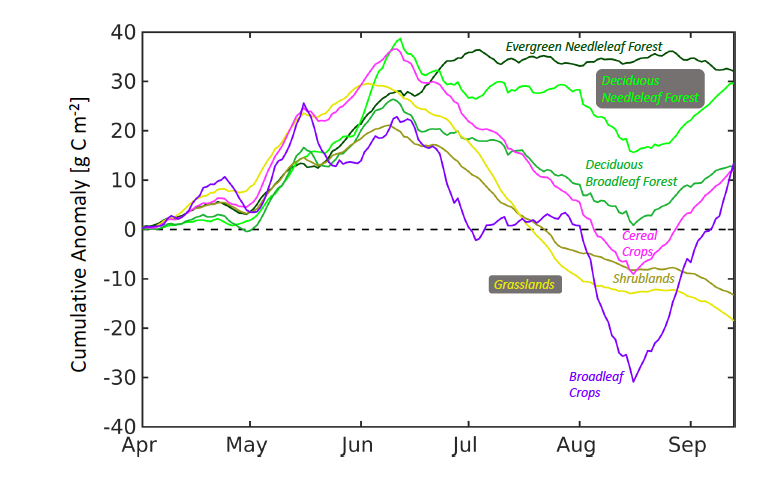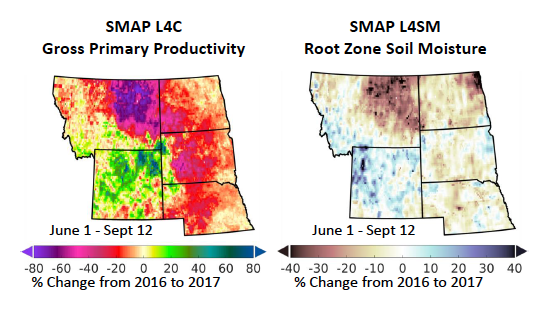
USDA-NIFA Water for Agriculture
Research Grant:
2016-67026-25067

NSF EPSCoRNSF EPSCoR
Cooperative Agreement:
#EPS-1101342

Montana NASA EPSCoR
Research Grant:
80NSSC18M0025M
The winter and spring of 2017 were wetter than average, bringing deep snowpacks to the northern Rocky Mountains and high prospects for alfalfa and pasture production. During spring and early summer vegetation growth was excellent compared to previous years. Unfortunately, these wet conditions were followed by an abnormally dry and hot summer, with record number of consecutive days above 90 degrees and no significant rain.
These persistent conditions during the summer have generated a virulent fire season in the western US and have caused the collapse of grain crops in the northern Plains. The intensity of the drought has been most dramatic in eastern Montana, with reports of over 50% of grain crops in poor or very poor condition. Eastern Montana has been enjoying relatively high levels of precipitation and soil moisture the last ten years, so the sudden onset of precipitation shortfalls has been very damaging.
A snapshot of the magnitude of this drought can be obtained from primary production and soil moisture anomalies estimated from satellite-mounted sensors. Using a new Gross Primary Product developed in Dr Kimball group, and based on SMAP L4 retrievals of root zone soil moisture, cumulative production anomalies are compared to long term conditions.
The figure below shows positive anomalies in primary production at the end of the spring and early summer in the Rocky Mountains and the northern Plains, which are associated with wet spring conditions. By mid-June, precipitation ceases and production collapses, especially crops, grasses and shrublands located in the plains, where drought conditions are being experienced. Needleleaf forests and broadleaf forests sustain relatively high levels of production or are less affected by precipitation shortfalls becuase these forests are mostly concentrated in mountain region of the northern Rockies, less affected by the drought.

Crops, on the other hand, are greatly affected because they are mostly located in the nothern plains, where the drought is concentrated. Drought conditions are specially intense in eastern Montana.
The image below is a portrait of this flash drought. The image show drought conditions remarkably circumscibed to the northern Plains. Clearly visible is the large decline in total primary productivity over eastern Montana (purple colors, left figure) and the collapse of soil moisture (brown colors, right figure), with respect to 2016 levels.
